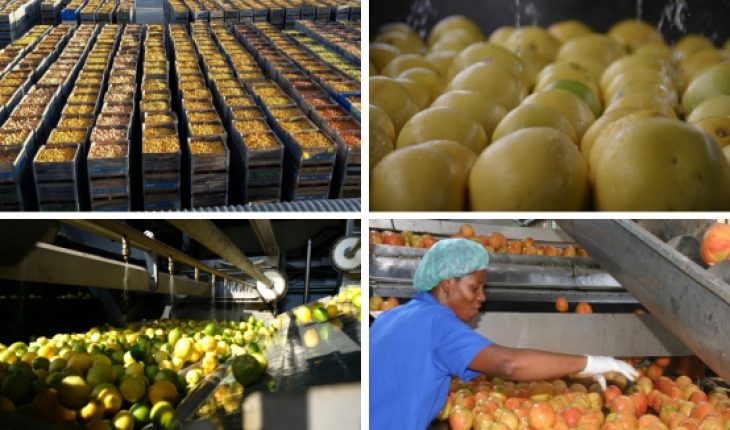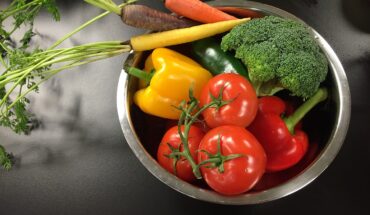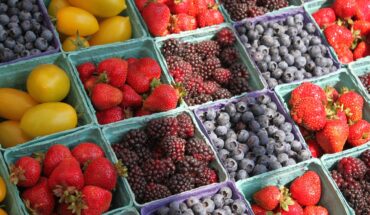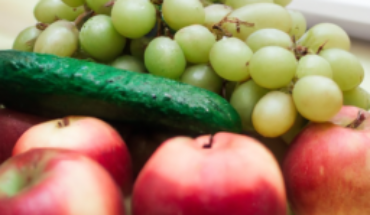Pomelos
Aka a pummelo, it’s the largest citrus around, even bigger than a grapefruit. Its skin is green with a thick interior pith and pale pink segments. It’s similar in taste to a grapefruit, though sweeter and without some of that off putting bitterness. Use pomelo in place of grapefruit in salsas, jams, or cocktails.
Lemons
Perhaps the most versatile citrus of all, lemons have an acidic, sour flavor tinged with a bright sweetness. Weight matters more than size here—the heavier the lemon, the juicier it will be. Use fresh lemon juice in salad dressings, marinades, cake mixes, and cocktails. Or, just a squeeze of juice will finish off most savory dishes. Chicken, salmon, soups, and pastas.
Limes
The lime’s acidic flavor is slightly bitter with some sweetness and a floral aftertaste. They’re notably smaller—and less juicy—than lemons, with a major difference: bright green skin and a greenish flesh. Use limes to make curd for lime bars or pies.
Blood Oranges
The blood orange is aptly named for its dark crimson flesh, though if you look close enough you’ll notice a dark orange peel, similar to that of a novel orange. The interior color isn’t the only difference here. Blood oranges are sweeter than your typical orange with an almost raspberry-like flavor. Eat them plain, bake them into cakes or sweet breads, or juice them for cocktails.
Tango Mandarins
The peel, pith, and flesh all have a deep orange color. This mandarin is sweet with a hint of tartness, virtually seedless, and an easy to peel skin. Eat them as a snack, juice, or segment for salads and baked goods.
Minneola Tangelo
This bell shaped citrus is a cross between a pomelo and a tangerine. It’s about the size of a baseball, with a sweet but tangy flavor, thanks to its horticultural genetics. Perfect for snacking, juicing, or adding to salad dressings or sauces.
Gold Nugget Mandarins
This late-season seedless citrus is fist-sized and lumpy with a juicy-sweet flavor and fragrant aroma. They’re a succulent mandarin ideal for juicing.
Grapefruit
One of the largest citrus fruits, grapefruit has a yellow skin with an instantly recognizable hint of pink. Inside, you’ll find a thick white pith and juicy segments that range from light blush to dark ruby in color. Grapefruit’s tart flavor benefits from a touch of sugar (we love it topped with sugar and broiled for a brulee effect) or even a dash of salt to mellow its acidity (try a sprinkle before adding to fruit salad!).
Valencia Oranges
Though this smooth hybrid was born in California, it was named in honor of the sweet oranges found in Valencia, Spain. It’s the ideal juicing orange thanks to its succulent segments, which produce a well-balanced sweet-tart liquid. Drink it fresh (strain its few seeds first) or use in marinades and salad dressings.
Cara Cara Oranges
The seedless Cara Cara is a medium-sized citrus with minimal pith that’s easy to peel. What’s really special is its deep orange rind and blood-orange interior. (It is a cousin to the blood orange, after all!) Cara Cara is delicious in ceviche with jalapeño, and it tames greens like spicy arugula and bitter radicchio.
Mandarin Oranges
Mandarin oranges are small—roughly 1.5 inches in diameter—and on the sweet side. The best part? No seeds and a flattened oval shape that makes it simple to peel. Mandarin segments are popular salad toppings (we like them on spinach), in desserts, and juiced for salad dressings.
Navel Oranges
Navel oranges get their name from the blossom end of the fruit, which looks similar to a human belly button. They are very sweet—more so than Valencias—seedless, and have a thick, easily peelable skin for convenient snacking. Use the juice in a tropical-inspired smoothie or along with garlic, cilantro, and olive oil in a marinade for grilled pork.
Storage
Citrus can be kept at room temperature for a few days, but the best place is in the crisper drawer where it will last for a few weeks. Just keep away from apples and pears—they emit ethylene gases that can accelerate the ripening process in most citrus.





